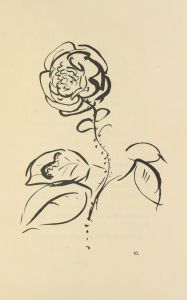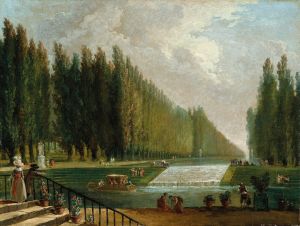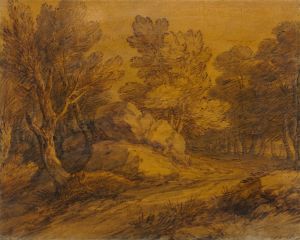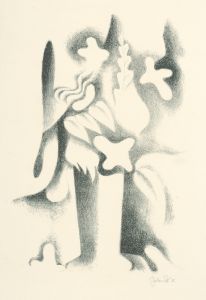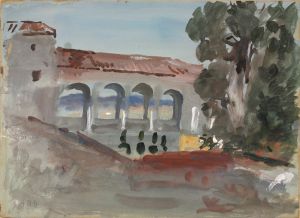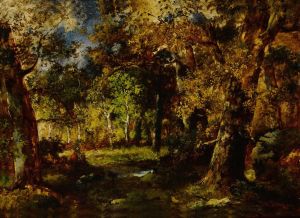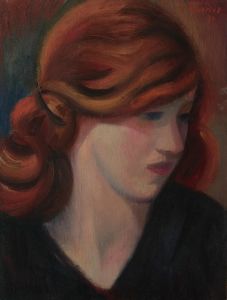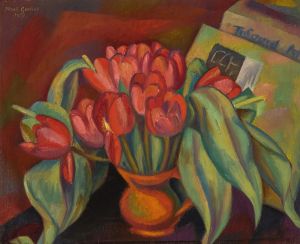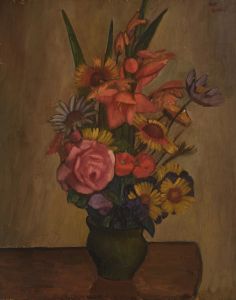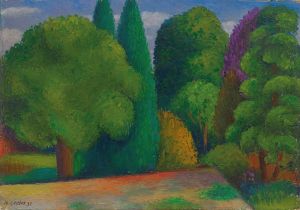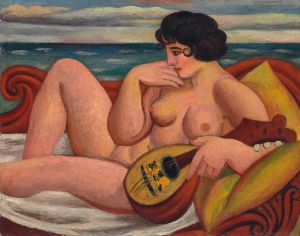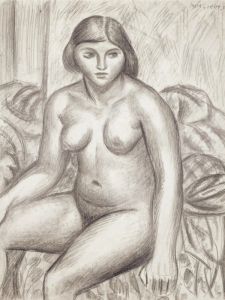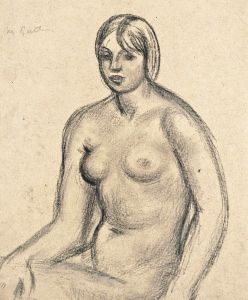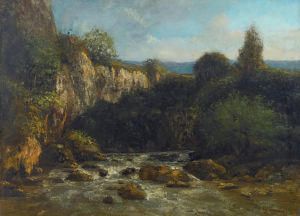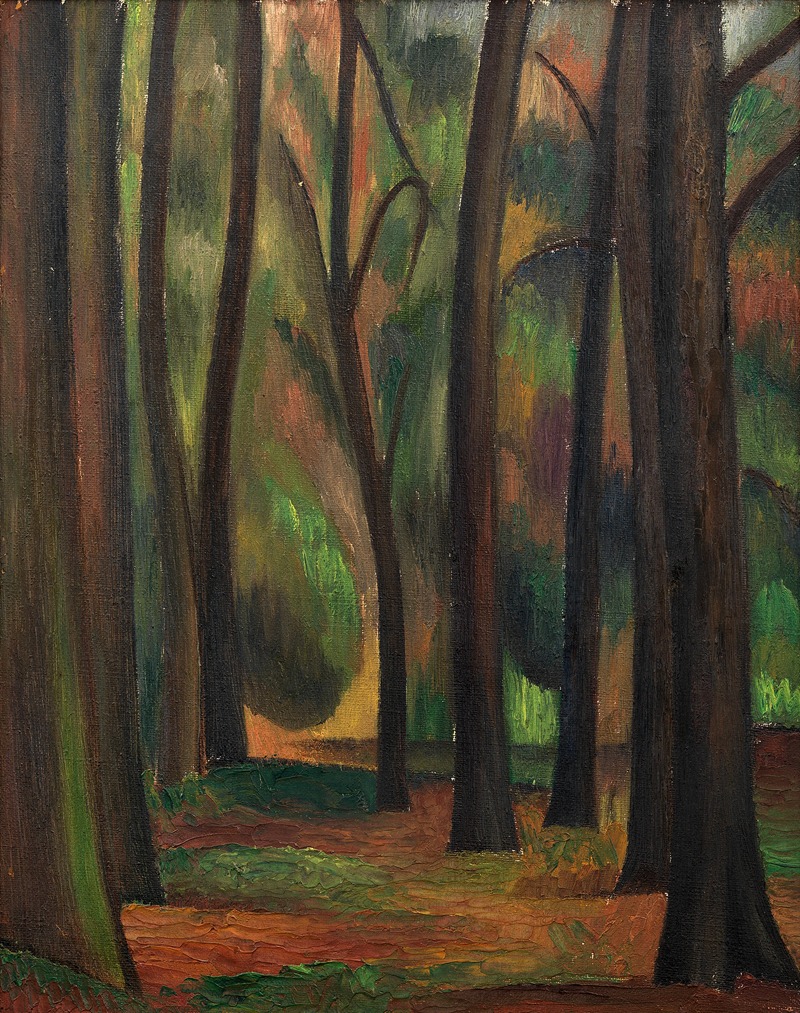
Trees at Garsington
A hand-painted replica of Mark Gertler’s masterpiece Trees at Garsington, meticulously crafted by professional artists to capture the true essence of the original. Each piece is created with museum-quality canvas and rare mineral pigments, carefully painted by experienced artists with delicate brushstrokes and rich, layered colors to perfectly recreate the texture of the original artwork. Unlike machine-printed reproductions, this hand-painted version brings the painting to life, infused with the artist’s emotions and skill in every stroke. Whether for personal collection or home decoration, it instantly elevates the artistic atmosphere of any space.
"Trees at Garsington" is a painting by the British artist Mark Gertler, created in 1918. Gertler was a prominent figure in early 20th-century British art, known for his association with the Bloomsbury Group and his contributions to the development of modernist painting in Britain. This particular work is a landscape painting that reflects Gertler's evolving style during a period of significant change in his artistic career.
Mark Gertler was born in 1891 in London to Polish-Jewish immigrant parents. He studied at the Slade School of Fine Art, where he was a contemporary of artists such as Dora Carrington, Paul Nash, and Stanley Spencer. Gertler quickly gained recognition for his talent and became part of the vibrant artistic and intellectual circles of the time.
The painting "Trees at Garsington" was created during a visit to Garsington Manor, the home of Lady Ottoline Morrell. Morrell was a notable patron of the arts and a central figure in the Bloomsbury Group, a collective of artists, writers, and intellectuals. Garsington Manor, located in Oxfordshire, served as a retreat and meeting place for many artists and writers during World War I, offering them a space to work and collaborate away from the stresses of wartime London.
In "Trees at Garsington," Gertler captures the serene and idyllic landscape of the manor's gardens. The painting is characterized by its vibrant colors and dynamic composition, showcasing Gertler's interest in Post-Impressionism and the influence of artists such as Vincent van Gogh and Paul Cézanne. The use of bold colors and expressive brushwork reflects Gertler's departure from the more traditional styles he had previously employed, moving towards a more modernist approach.
The subject matter of trees and nature in "Trees at Garsington" can be seen as a reflection of the broader artistic trends of the time, where many artists sought solace and inspiration in the natural world amidst the chaos of the war. The painting's composition, with its rhythmic arrangement of trees and interplay of light and shadow, demonstrates Gertler's skill in capturing the essence of the landscape while infusing it with his unique artistic vision.
Gertler's time at Garsington and his interactions with other artists and intellectuals had a profound impact on his work. The environment fostered creativity and experimentation, allowing Gertler to explore new techniques and ideas. "Trees at Garsington" stands as a testament to this period of growth and transformation in his career.
Today, Mark Gertler is remembered as a significant figure in British art, and "Trees at Garsington" remains an important example of his work during a pivotal moment in his artistic development. The painting is appreciated for its vibrant depiction of nature and its reflection of the broader cultural and artistic movements of the early 20th century.





